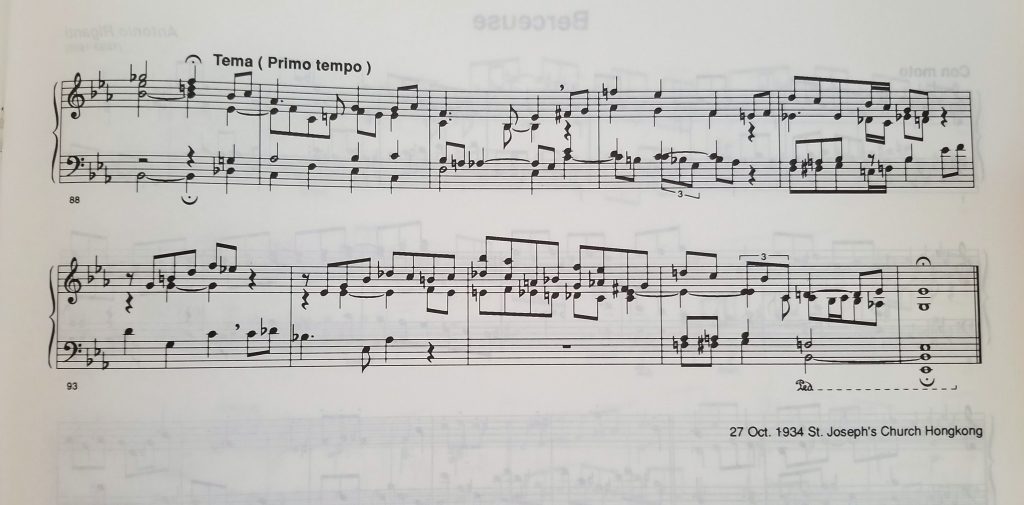Updates for July 2019
29 July 2019Updates to the POCP Website for July 2019:
- New photos have been added to:
2. Project Founder Prof. David Francis Urrows visited Macau in July, and found that the planned IV/54 Casavant, Op. 3925, for the Cathedral is now apparently ‘on hold.’ No work (at least visible work) has been done in the Cathedral, in particular on the organ loft which should probably hold the antiphonal division. We will update when further information about this major installation, originally planned for 2018, become available.
- Fr. P. Antonio Riganti PIME (1893-1965)

While in Hong Kong earlier this month, Prof. Urrows acquired two volumes of music by Fr. Antonio Riganti, a PIME[1] missionary who through his ministry had a major impact on music in the Roman Catholic churches of Hong Kong between 1919 and 1965. These compositions are contained in two rather misnamed folios, A Collection of Liturgical Organ Pieces, Vols. 2 and 3. These were edited by the Hong Kong Diocesan Sacred Music Commission and published in 1995 and 1996, respectively.
Most of the works in the two collections date from the mid-1930s, when Fr. Riganti was serving at St. Joseph’s Church, Central (he was Rector of St. Joseph’s between 1927 and 1948.) This church, torn down in 1966-67, was the site of HKG1919. It is possible, therefore, that at least some of Fr. Riganti’s organ compositions were written for, or even played on, this Blackett and Howden organ. The music itself was edited (rather amateurishly) from manuscripts obtained from the PIME archives, as Hong Kong itself does not appear to have any surviving collection of Fr. Riganti’s works. Riganti also composed choral pieces, masses, piano compositions, and chamber music.
The Project is, in general, not much concerned with organ repertoire; but it is certainly interesting to see what was passing for liturgical music at this time. Most of it is a kind of ‘liturgical salon music’; the works have charm, but are highly and in some ways excessively chromatic, many pieces seem more suited for the harmonium, or even the piano, than the pipe organ, and with rather sparing use of the pedal division they lack a certain impact (HKG1919 probably only had a 16ʹ Bourdon in the pedal division, and is known to have had no reed stops.) Most have, however, dates and places of composition, usually St. Joseph’s (see illustration).

Further information about Fr. Riganti and his music is available at the following webpages:
https://archives.catholic.org.hk/In%20Memoriam/Clergy-Brother/A-Riganti.htm
https://musicasacra.org.hk/publish/riganti_en.html
https://musicasacra.org.hk/publish/organpiece_tw.html#05
[1] Pontifico Istituto Missioni Estero (Pontifical Institute for Foreign Missions), now based in Rome, but founded in 1850 in Milan and still sometimes known as the ‘Milan Missionaries’.